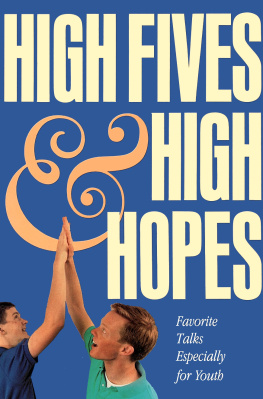Contents
Guide
One Kiss or Two?
In Search of the
Perfect Greeting
ANDY SCOTT

For my friends and family finally
Preface
I was standing outside a hotel in Istanbul, trying to get my bearings, when the idea for this book first came to life. Two bouncer-like figures stood either side of the entrance looking tough. It was hardly the most welcoming sight and I held back from asking for directions. But, then, to my amazement, a young guy wandered over and greeted them with double kisses, lightly holding their chins as he passed from cheek to cheek. Suddenly, the stone-faced doormen were all smiles and laughter. It was an intimate scene and I was left wondering why, back home in the UK, we sometimes struggle with even a handshake. What was so different in Turkey?
In different forms, this was a question that stayed with me over the following months, as I made my way across Europe and down Africa. Id finally finished my PhD and was on a giant trip, trying to get from Cambridge to Cape Town overland using public transport. As I crossed from country to country and culture to culture, I began to keep note of the different greetings I encountered. I was particularly struck by the reception I received in Sudan. It was a country I was nervous about entering, with its news dominated by war and instability. But, where I was travelling, I neednt have worried. Apart from the barren landscape and burning heat, my overwhelming impression was of incredible friendliness. If in doubt, all I had to do was use the traditional Arabic greeting As-salamu alaykum (Peace be upon you), and peoples faces would light up as they returned the gesture. Back home, it was a sentiment reserved for my yearly visit to church and even then was a bit embarrassing, but here it felt like the perfect way to break down any barriers or suspicion, and I found myself greeting like never before. The physical side of Sudanese greetings also had a special quality. Between men, they often began with an exaggerated pat to the right shoulder before combining this with a handshake. I started off tentatively, but there was always particular delight when I joined in the ritual.
In Ethiopia, the shoulder pat became the shoulder bump, which was then replaced by a sort of finger snap in parts of Kenya. Of all the greetings I encountered, though, my favourite was towards the end of my trip, in Namibia. Having just arrived, I was standing in a bank changing some money, when I noticed two men approaching each other, smiling broadly. The younger man stopped a couple of metres short and crouched down, holding his hands together as if about to pray. He then gave a short burst of applause, while the other man watched in appreciation. No one else seemed to notice, but I was transfixed. The whole display finished with a hug and a handshake, accompanied by a warm and enthusiastic exchange. Again, what was different in Namibia, I wondered? How did people come to greet each other like superstars?
Back home, inspired by my trip, the idea of a book on greetings took hold. But hasnt it been done before? people asked. It seemed so obvious. After all, there are books on just about every aspect of human behaviour. Id even seen books on queuing. Surely there must be one on the first moment of interaction. I nervously turned to Google, certain I would find the book that would kill the idea. But, to my relief, all I found, buried among a bunch of sites selling Christmas cards, was a childrens picture book which, while fun, didnt give greetings the treatment Id begun to think they deserved.
At first, I thought in terms of a global guide, and began to search for and catalogue different greetings from around the world. There were more variations of the handshake, such as the diagonal clasp and fist bump, and then different twists on our most common greetings. But I was determined to find the most unusual and reveal humans in all their oddness. It was like being on an Indiana Jones adventure, albeit sitting in front of a computer screen. There are the more well-known ones, such as the Maori nose rub (the hongi) in New Zealand or the prayer sign (the namaste) in parts of Asia. But, as I got deeper, past the first pages, I started to discover more outlandish customs behaviour that made me question what it really means to say hello. Theres cheek-sniffing in Tuvalu and foot-kissing in Bangladesh; in Tibet, theres the practice of poking tongues out, while members of the Maasai tribe in Kenya mark each others arrival by spitting on the floor. One article even described the convention among Central Eskimos of slapping strangers around the face when first meeting. The stranger is then entitled to slap back and more rounds follow, in ever-greater intensity, until someone finally falls to the floor, presumably in a lot of pain.
All of this challenged my understanding of what it means to greet. Being a naturalist at heart, I started to look beyond our own species, wondering if and how the rest of the animal world says hello. My own knowledge mostly came from watching our cats. I realise that theres a danger of thinking of our pets in human terms, but I was struck by how they seemed to have their own special greetings. Of the current bunch, Alice (who is sitting next to me as I type) has a peculiar way of quivering her tail whenever she walks in, which usually lasts for a few seconds until shes had her first stroke. Then theres her brother, Bedford, who is much more vocal, especially when bringing in mice or birds, which he announces with a deep meow, as if hes summoning the spirits. Towards each other, they mostly hiss and growl. But at friendlier moments theyll rub noses and inspect each others behinds. Id even heard of cats headbutting each other. Did these count as greetings, I wondered? And what about species closer to our own?
In the end, as I collected all of the different customs, I realised that my global-guide idea had turned into something else. Id started to see these first moments of interaction as a window into different cultures, maybe even our species as a whole. The thing that began to interest me was not so much what people did but understanding why they did them. How did these greetings come about, evolve and spread? How did we come to shake hands, pat shoulders and slap faces? And why do we even bother with these rituals in the first place? Were they simply a matter of culture or, looking at our cats, was our biology involved? Stepping back, I was struck by a simple fact: that greetings are at once both universal and particular; that is, theyre something we all do but each in our own special way. While basic, I felt like this touched on something profound something about what it means to be human and about our place in the world.
So these are the aims of this book: to reveal greetings in all their variety and complexity, and to understand their origin, why we do them and how they have evolved. To this end, what follows takes us on a journey in search of answers to some basic questions. Starting out, though, well look at where and how our greetings can go wrong. In truth, the driving inspiration behind this book was not so much travelling the world and marvelling at humanitys diversity as being at home and getting in a constant muddle. As well see, our greetings have become a big source of confusion and embarrassment, and things seem to be getting worse. Part of the problem is that these first moments of interaction are important, though we dont always know why or how. In subsequent chapters, well try to get to grips with some of this, to see if we can help get our greetings right or at least better understand why we get them wrong. First, well dissect whats in a greeting to find where the problems lie. Well then see if there really is such a thing as a perfect greeting and how we can know. Next, well tackle the issue of handling greetings from around the world to understand how we should behave when meeting people from different cultures. Having come to terms with our differences, though, well go in search of what unites us and whether our greetings share any common origins. Here, well step back into our evolutionary past and explore our connections with the rest of the animal world. In doing so, well see how our strangest greetings actually reveal some fundamental aspects of human behaviour that connect us all. Well also look more closely at some of the physiological dimensions to our greetings, exploring how our senses and, most importantly, our brains come into play. Having dug into the origins of our greetings, well trace how theyve evolved and spread, using them as a barometer for our entire history. Finally, well take a look into our future, assessing where our greetings are going.













